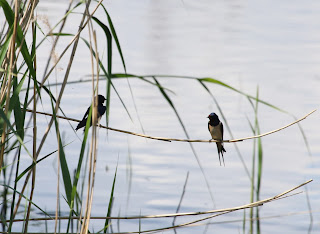 |
Die Elbe from Magdeburg to Jerichow - note the large number of 'ox-bow' lakes |
 |
| Flood plain landscape around Jericho - note the tall grass and small lake middle right |
 |
| Great Reed Warbler - Jericho |
 |
| Black Tern - Jericho |
 |
| A couple of Swallows - Jericho |
 |
| Osprey - Jericho |
 |
| Corn Bunting - Jericho |
 |
| Lapwing - Jericho |
 |
| Common Whitethroat - Jericho |
 |
| White Stork - Jericho |
 |
| A view from the deck! |
 |
| Herr Fuchs - Bertingen |
 |
| Red-backed Shrike |
 |
| Magdeburg and the Dom |
 |
| Pond at Prester, Magdeburg |
 |
| Hooded Crow - Prester |
 |
| Grey Heron - Prester |
 |
| Blue-headed Wagtail, Prester |
 |
| Mighty stream - Die Elbe just south of Magdeburg |
No comments:
Post a Comment